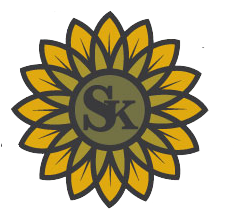Chromotherapy Sauna Benefits: Color Therapy Explained
We are right around the corner from winter, and many people now understand what “winter blues” are, in fact, the very real Seasonal Affective Disorder (SAD). Many SAD sufferers find relief with bright light therapy but others are unable to use bright light therapy for various sensitivity or medical reasons. Chromotherapy, which is known as color therapy, is integrated into all our far infrared sauna session to help balance the body’s energy wherever it is lacking. Chromotherapy sauna benefits include physical, emotional, mental and spiritual healing.
Chromotherapy is the science of using colors to adjust body vibrations to frequencies that result in health and harmony. Each color possesses frequencies of a specific vibration, and each vibration is related to different physical symptoms.
Our bodies need the sun’s light to live. And that light can actually be broken down into a seven color spectrum. An imbalance of any of those colors can manifest itself in physical and mental symptoms. Color therapy works on various energy points to help balance your body via the full spectrum of visible light, each color addressing a distinct need.
Color and light have been utilized by healers for thousands of years. Color therapy possibly has roots in Indian medicine (Ayurveda), ancient Egyptian culture and traditional Chinese healing.
Alternative medicine practitioners who use chromotherapy often relate the seven colors of the color spectrum to specific body areas.*
sourced from www.sunlighten.com
A Brief Overview of Colors used in Chromotherapy
Red
Red is believed to increase the pulse, raise blood pressure and increase the rate of breathing. Red would be applied to support circulatory and nervous functions.
Strong Pink
Strong pink acts as a cleanser, strengthening veins and arteries.
Pink
Pink activates and eliminates impurities in the blood stream.
Orange
Orange is a mixture of red and yellow. Activates and eliminates localized fat. Assists with asthma and bronchitis
Strong Yellow
Strong yellow strengthens the body and activates internal tissues.
Yellow
Yellow, the brightest color used in chromotherapy, has been used to purify the skin, help with indigestion, strengthen the nervous system, treat glandular diseases, hepatitis and lymphatic disorders and assist metabolism.
Green
Green, a color associated with harmony, provides a neutral, positive calming effect.
Strong Green
Strong green provides anti-infectious, anti-septic and regenerative stimulation.
Strong Blue
Strong blue lubricates joints, helps address stress, nervous tension and infections.
Blue
Blue promotes relaxation and calm. Blue exhibits tranquilizing qualities often used to relieve headaches and migraines, colds, stress, nervous tension, rheumatism, stomach pains, muscle cramps and liver disorders. Blue is thought to have a positive effect on all kinds of pain.
Indigo
Indigo is used to address conditions involving the eyes, ears and nose. It has a calming, sedative effect.
Violet
Violet is used to calm the nervous system, soothe organs and relax muscles. Violet has meditative qualities and is often used to treat conditions of the lymphatic system and spleen, as well as urinary disorders and psychosis.
All wooden Sunlighten saunas have a chromotherapy lighting option available. This add-on is unlike any other on the market, offering sauna benefits unique to other forms of color therapy. Instead of single color lights, Sunlighten’s package includes 16 colors, four color-changing modes, and four brightness/intensity settings. The lights are soft and gentle and can be controlled by remote. Very affordable, chromotherapy lighting is one of our most popular infrared sauna options.
Color therapy has been practiced throughout the world for centuries, and remains one of the most popular Complementary and Alternative Medicine (CAM) therapies available.**
*What is Color Therapy?, Insight Journal, October 16th, 2006
**A Critical Analysis of Chromotherapy and its Scientific Evolution, Samina T. Yousuf Azeemi and S. Mohsin Raza, Evid Based Complement Alternative Med. 2005 December; 2(4): 481-488.http://www.ncbi.nlm.nih.gov/pmc/articles/PMC1297510/


